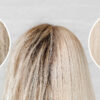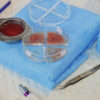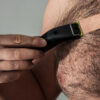Extensive hair loss is a common although somewhat embarrassing problem leading to discomfort both in women and men. Hair loss is particularly difficult to be accepted by young people. Fortunately extensive hair loss does not mean that this process is irreversible. Today alopecia is considered a disease to be treated with various methods.
Alopecia treatment options
In case of alopecia, as every disease, initially it is necessary to establish the correct diagnosis. First of all, it is important to note that it is normal that we lose some number of hair a day. A healthy person loses even up to 100 hairs a day. However, if you start to lose an excessive amount of hair then you can call it alopecia.
The causes are different: genetics, hormonal changes, other diseases or medicines. Hair loss can also result from stress, a slimming diet or follow childbirth. Therefore, it may be crucial to find the cause in the course of alopecia treatment.
Types of hair loss
There are 2 types of hair loss
1) cicatricial alopecia (scarring alopecia) – hair follicles are irreversibly destroyed and replaced by fibrous tissue and collagen. Hair loss is irreversible. Scarring alopecia refers to a collection of very different causes.
They include many diseases i.e.:
- genetic: ichthyosis, epidermiolysis bullosa, chondrodysplasia punctata, incontinentia pigmenti,
- cancer: metastatic tumors, basal cell tumors, adnexal tumor, squamous cell tumors, hemangioma, lymphocytic infiltration, lymphomas
- skin infections: boil, multiple boil, leprosy, tertiary syphilis, lupus erythematosus, perifolliculitisabscendens et suffodiens, herpes zoster, serious dermatophytes infections
- physical factors damages: ionizing radiation, thermal, mechanical and chemical trauma
- other diseases: amyloidosis, cicatricial (scarring) pemphigoid, pustulosis eosinofphilica, lichen sclerosus et atrophicus.
In many cases it is impossible to establish the cause of alopecia. Then it can be called pseudopelade i.e. the term to describe a unique form of cicatricial alopecia resembling alopecia areata used by Brocq. Diagnosis of this alopecia type should follow when the doctor excludes other possible causes of scarring alopecia.
2) non-scarring alopecia, known as primary alopecia. It is caused by factors not connected with skin scarring. The most common types are androgenetic alopecia and alopecia areata.
Hair loss diagnosis
Nowadays more and more young people in our society suffer from alopecia. This disease can result from emotional disorders, self-acceptance disturbance as well as relationship problems. It is crucial to conduct a complex diagnosis in order to recognize alopecia type, its cause and choose the best treatment option.
Diseases associated with hair loss can have various causes and background.
Clinical examinations provide only basic information about a patient. Therefore, it is required to conduct further examinations to learn about real cause of hair loss.
Before the diagnosis the patient should be informed about the recommendations. Hair should not be styled, dyed nor cut about 3 weeks and washed at least 72 hours before examinations.
Additional tests include:
Pull test
The doctor wraps fingers around approximately 40-60 hairs and pulls gently upwards.
The test is performed in 4 areas: forehead, occiput and both temples.
If minimum 4 hairs remain in a given area or over 15 hairs in 4 areas, one should consider it a positive pull test.
It is a simple test but has low diagnostic value. It is difficult to specify the test’s standards as mostly the results depend on how tightly the doctor pulls the hair. This test only specifies if hair loss is a patient’s problem or not.
Trichogram
It is a diagnostic test conducted to learn about the cause of hair loss. Hair follicles, at different growth stages, are extracted from the scalp and undergo a microscopic analysis of their structure and number. It is a semi-invasive test where approximately 50-100 hairs are extracted and their roots are assessed using hair analysis microscope.
Selection criteria of hair type basing on its growth stage are the following:
- sheath presence,
- keratinization areas,
- hair bulb appreance,
- the remaining keratinization collumn,
- disorders of the above hair structures.
Additional tests may include assessment of hair shaft structure to find any changes. This is particularly important in case of congenital hair disorders i.e. beaded hair or bamboo hair.
As Blume – Peytavi – Orfanos recommend in case of patients suffering from diffuse alopecia hairs are extracted with forceps from forehead area (about 2-4 cm below front hairline) and occiput (about 2 cm below middle hairline).
In patients with limited alopecia they are extracted from the area surrounding bald spots or the opposite side.
The next step is light microscopic hair analysis. The results are shown in percentage values i.e. a ratio of particular hair type in relation to total hairs count.
Phototrichogram, trichoscan
This is a non-invasive method being an alternative to the standard trichogram.
It provides an assessment of the alopecia and defines a type of pathology. Phototrichogram is used for hair growth assessment by taking photographs of a scalp area.
An area of the scalp, about a centimeter in diameter, is shaven leaving the hair 1 mm long and a photograph is taken. A second set of pictures of the same shaved areas are taken 48 hours of 5-7 days later. Then a doctor can assess hair density and diameter, quantity and growth rate. The next step is a microscope analysis of cut hair shafts. Hair diameter and its degeneration e.g. twisting, thickening or narrowing are analysed. However, this technique does nor analyse hair root.
Dermatoscopy is a simple examination of skin structures with a dermatoscope. It is painless and takes only a few minutes. It can help detect abnormalities at the early stage allowing to quickly use effective treatments to heal the patient.
Treatment of baldness
There are different products to be taken orally, usually including hormones, available on the market. They can inhibit hair loss process and even stimulate new hair growth. They are recommened to be taken without intervals and it is suggested to consult a doctor prior to using. Alopecia can also be treated by using special care shampoos, conditioners and ampoules to be rubbed into the scalp.
You can also choose more invasive and expensive methods which are sometimes more effective than medicines. They include laser therapy, hair transplant and implants. Each of the above methods has pros and cons. However, the most important is the fact that they can give hope to inhibit hair loss process, restore at least part of hairs as well as feel better.





